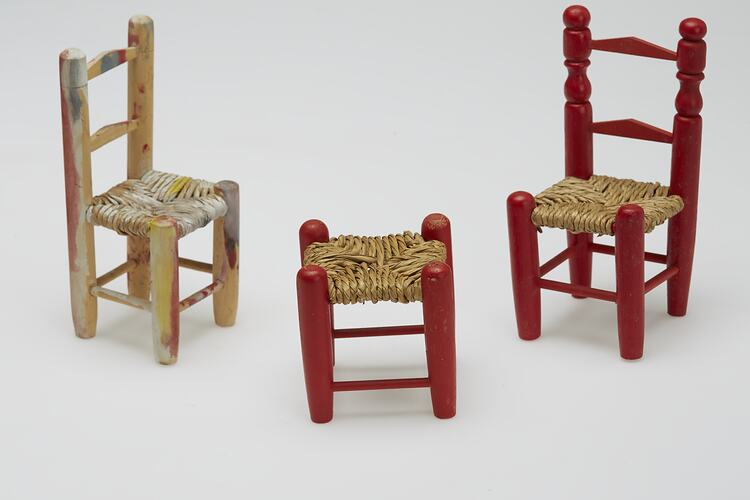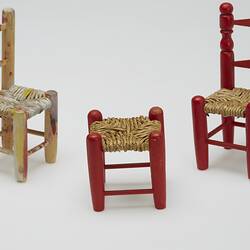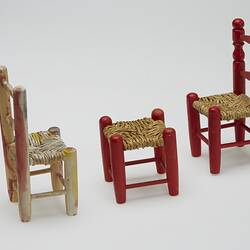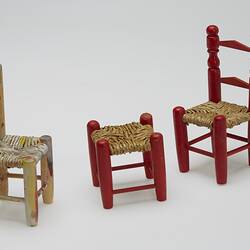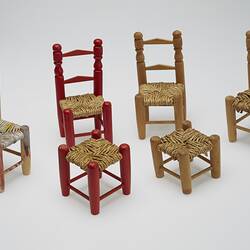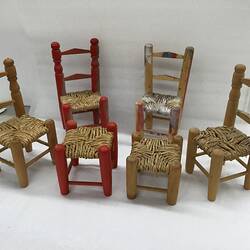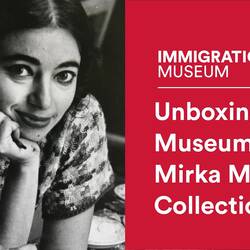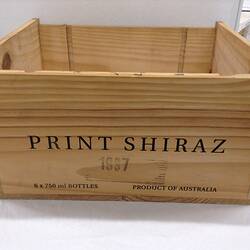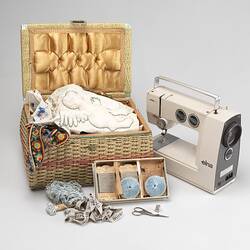Summary
Collection of six miniature furniture pieces, which were owned and used by Mirka Mora in her art studio in Tanner Street Richmond from the year 2000. Mirka located there after having lived in a number of residences and studios in Melbourne CBD, Toorak, and St Kilda. These items were part of a group of small dolls, prams and furniture stored in a timber wine box (HT 55702). There are four high-backed wooden chairs and two stools with raffia seats.
This is one of a collection of artist's materials, sewing equipment, clothing and personal items relating to the life and work of iconic Melbourne artist Mirka Mora, sourced from her Richmond artist studio in 2019.
Physical Description
The collection consists of two stools (one red painted frame and one natural wood finish) and four chairs (one red painted frame and three natural wood finish), all with raffia seats. One chair displays paint spatters on the frame.
Significance
Statement of Historical Significance:
There are few names as synonymous with Melbourne's cultural and artistic life as Mirka Mora. Artist and café and restaurant owner, her larger than life personality and her very accessible and public art dominated Melbourne's cultural landscape for over 50 years. Mirka was a post World War II migrant and a leader in the formative years of Melbourne artistic and cultural urban development. Mirka embodied the spirit of bohemian Melbourne for decades and this diverse collection provides an entry point to appreciating the rich life of a complex, multi-faceted woman. The material represents a migrant, cultural and artistic life, revealing her artistic processes, influences and style,and brings the personal side of Mirka to life.
This collection also complements one of the migration collection's strongest sub-collections, the Immigration and Artistic Practice collection. This collection draws on artworks, materials, equipment, migration objects and oral histories to explore how Victorian migrant artist's adapt, develop and transform their artistic practice within a new social, cultural and artistic environment. It provides evidence of the richness provided to the documenting of migrant artist's lives, not just through their artworks, but through the materials showing how their practice evolved over time.
More Information
-
Collecting Areas
Migration & Cultural Diversity, Working Life & Trades, Clothing & Textiles
-
Original Owner
-
Classification
Migration, Settlement - cultural & social life, Tools & equipment
-
Category
-
Discipline
-
Type of item
-
Keywords
Artists, Art, Painting Equipment, Sewing Baskets, Sewing, Dolls
